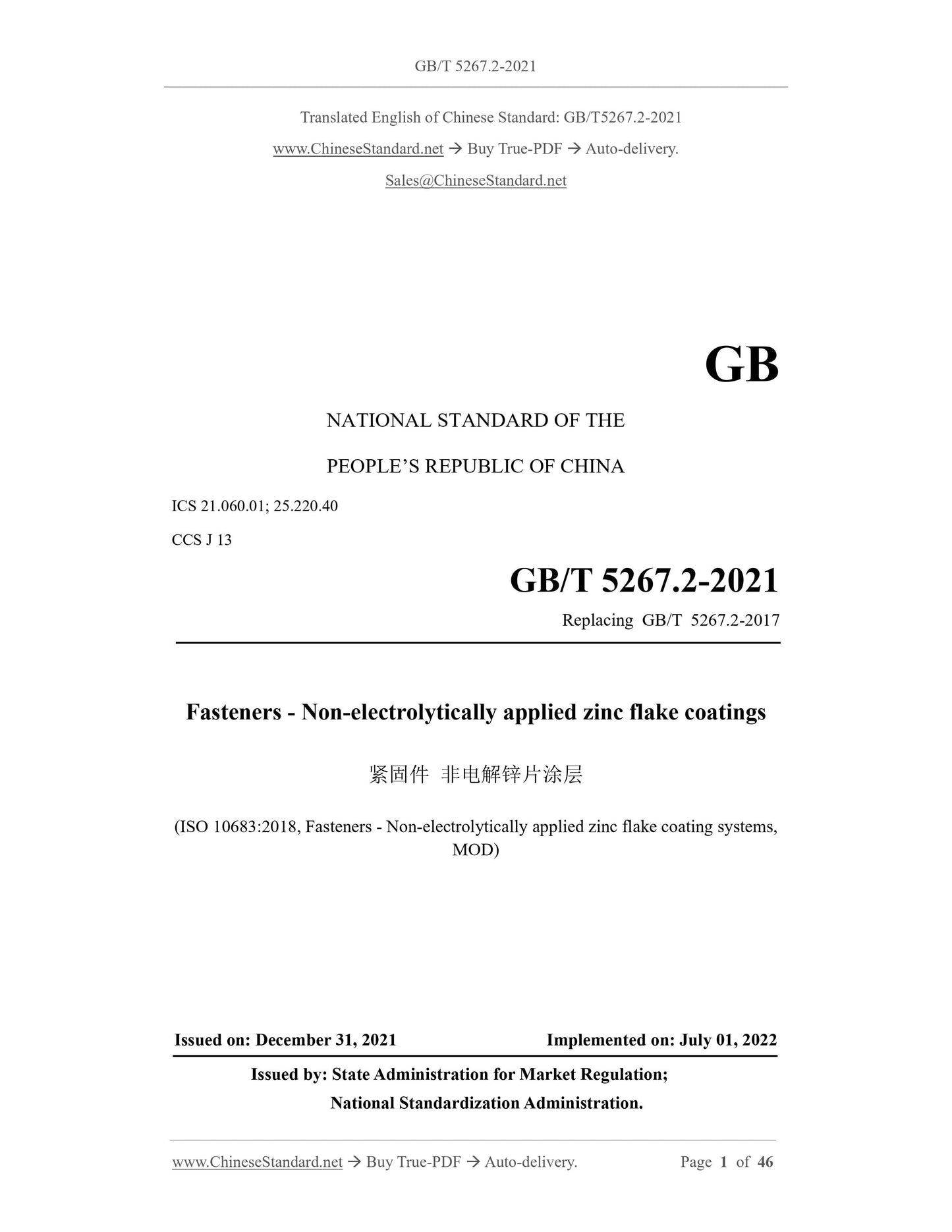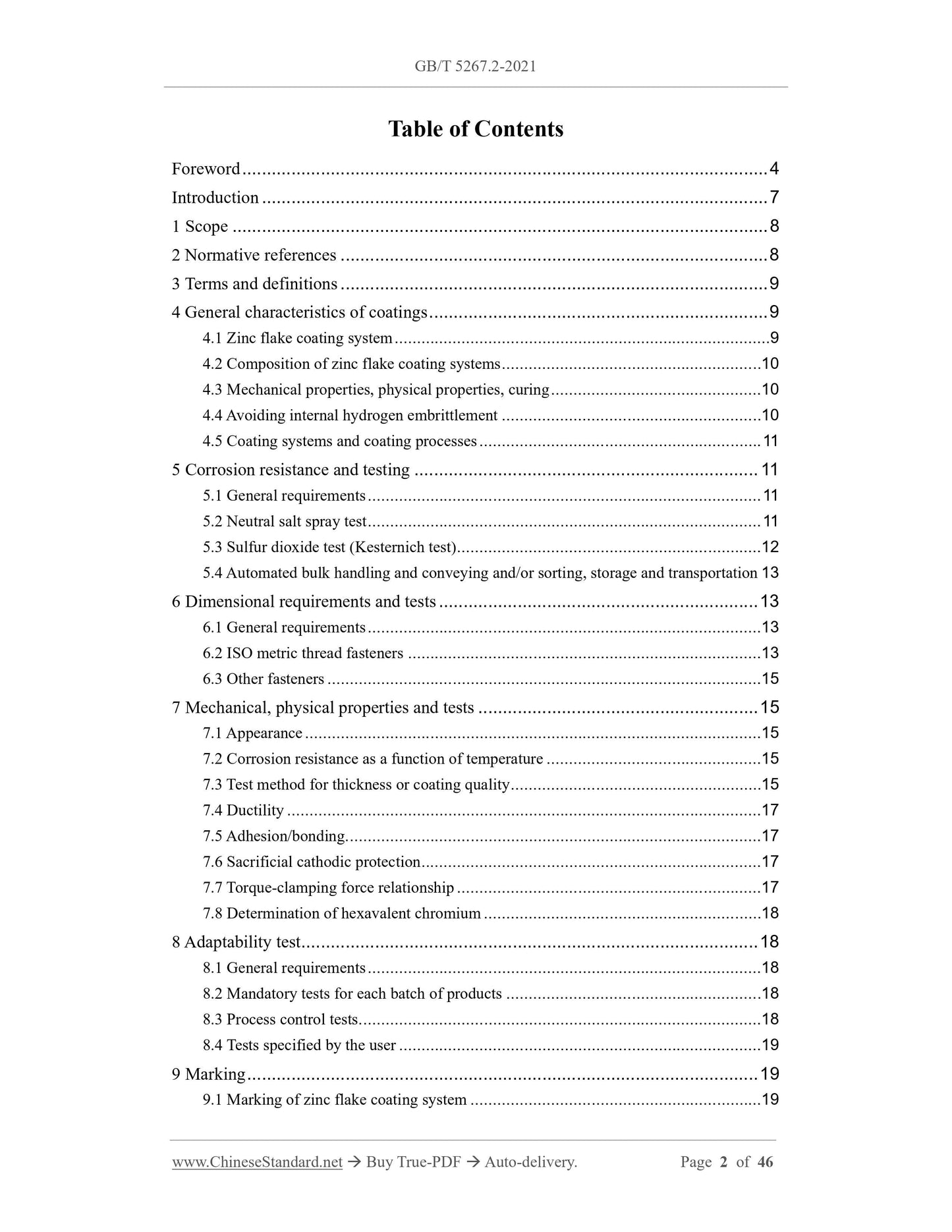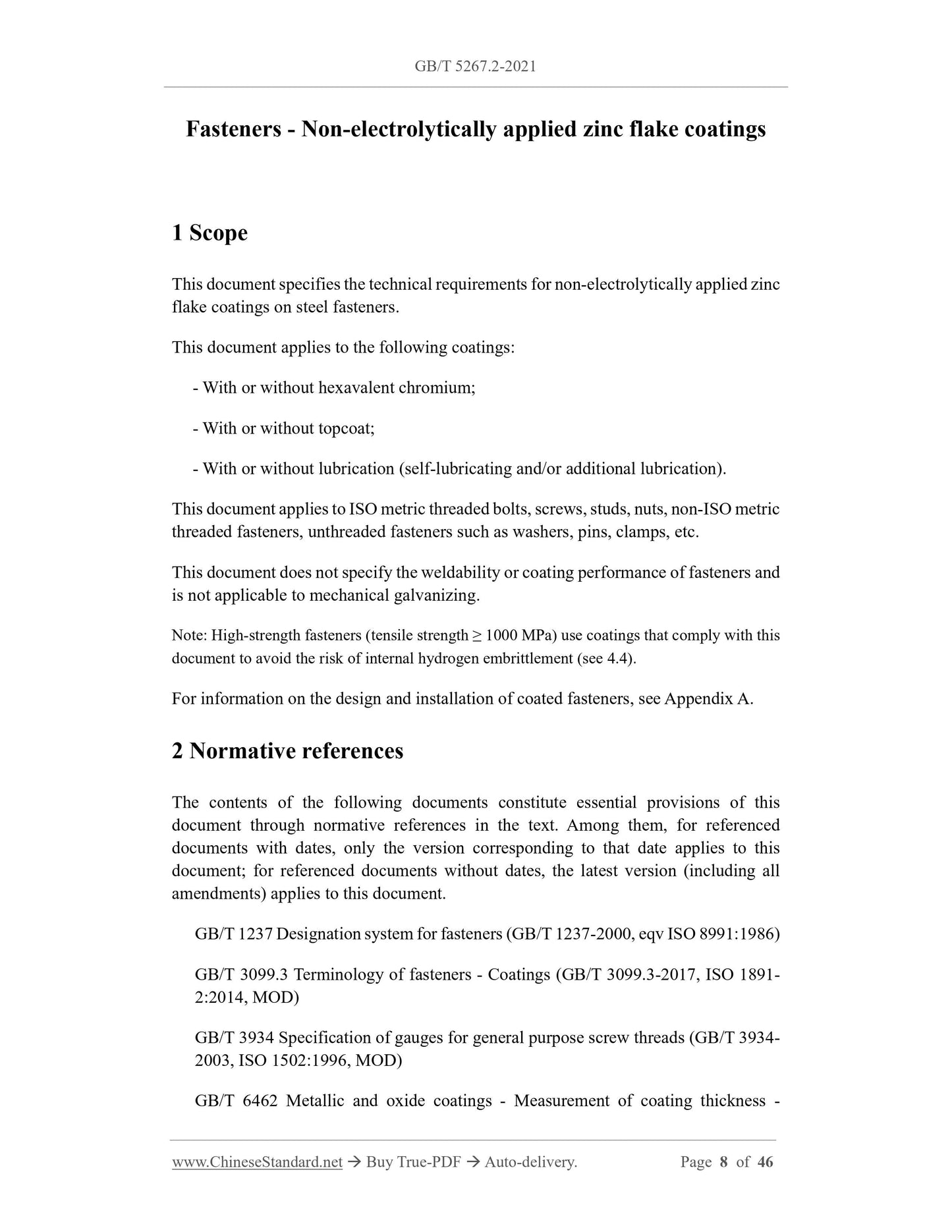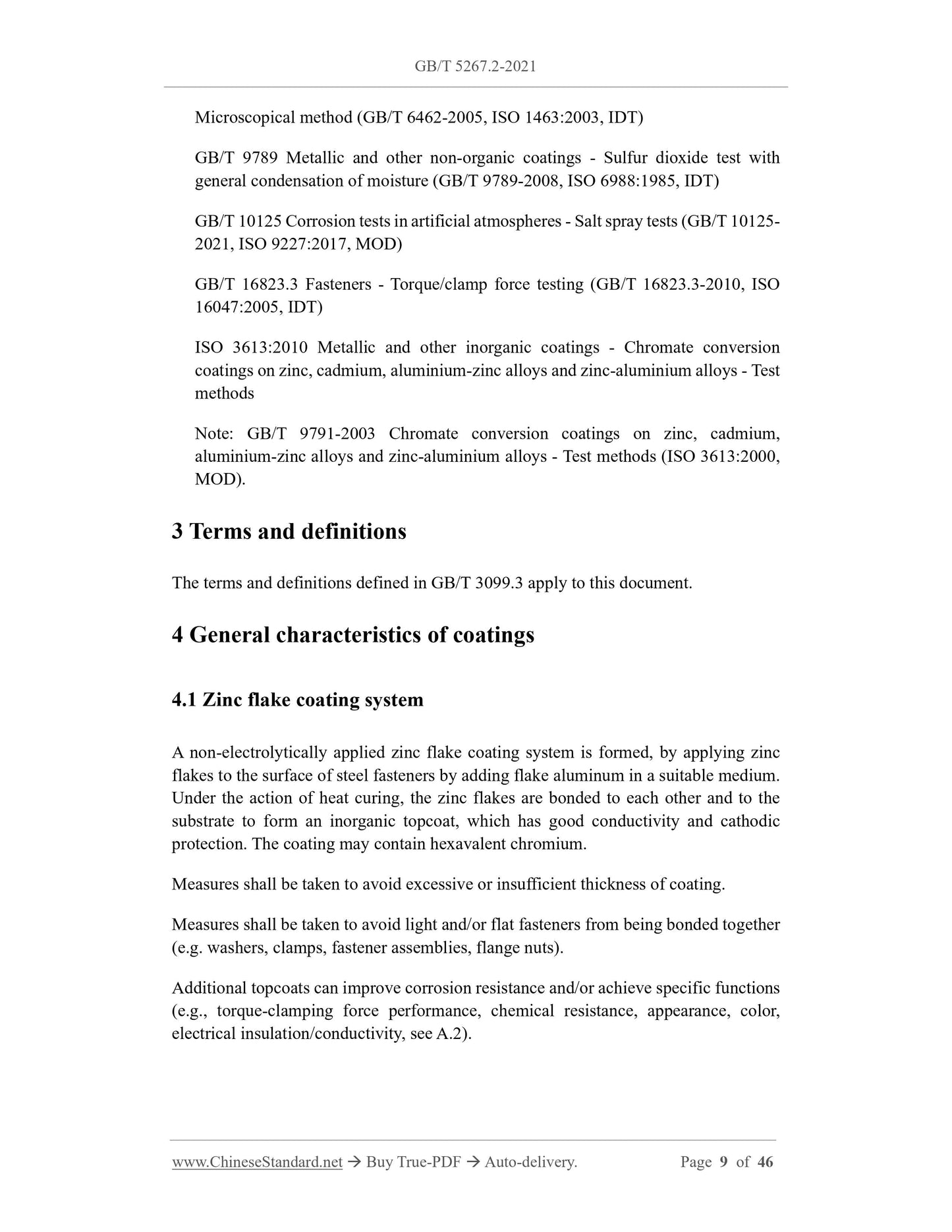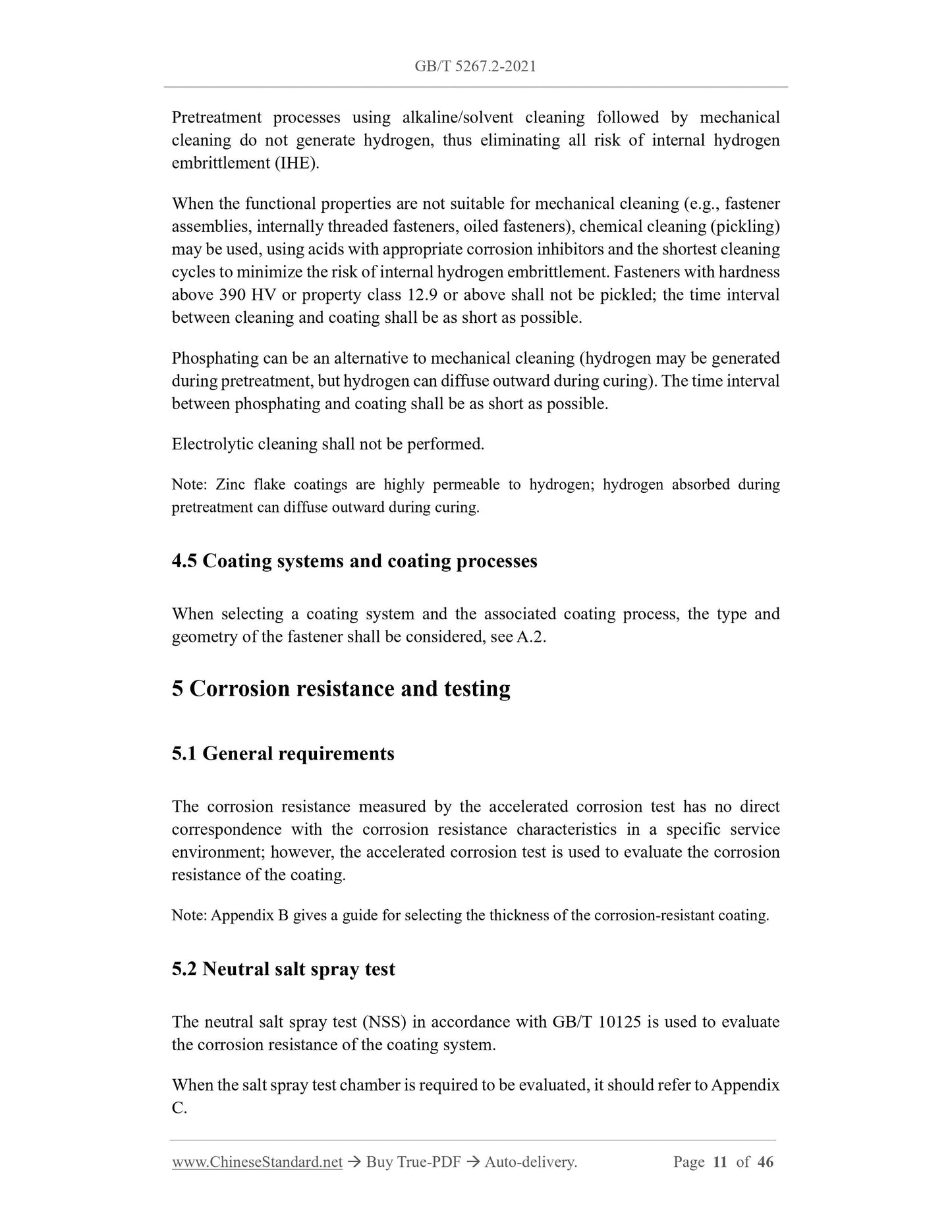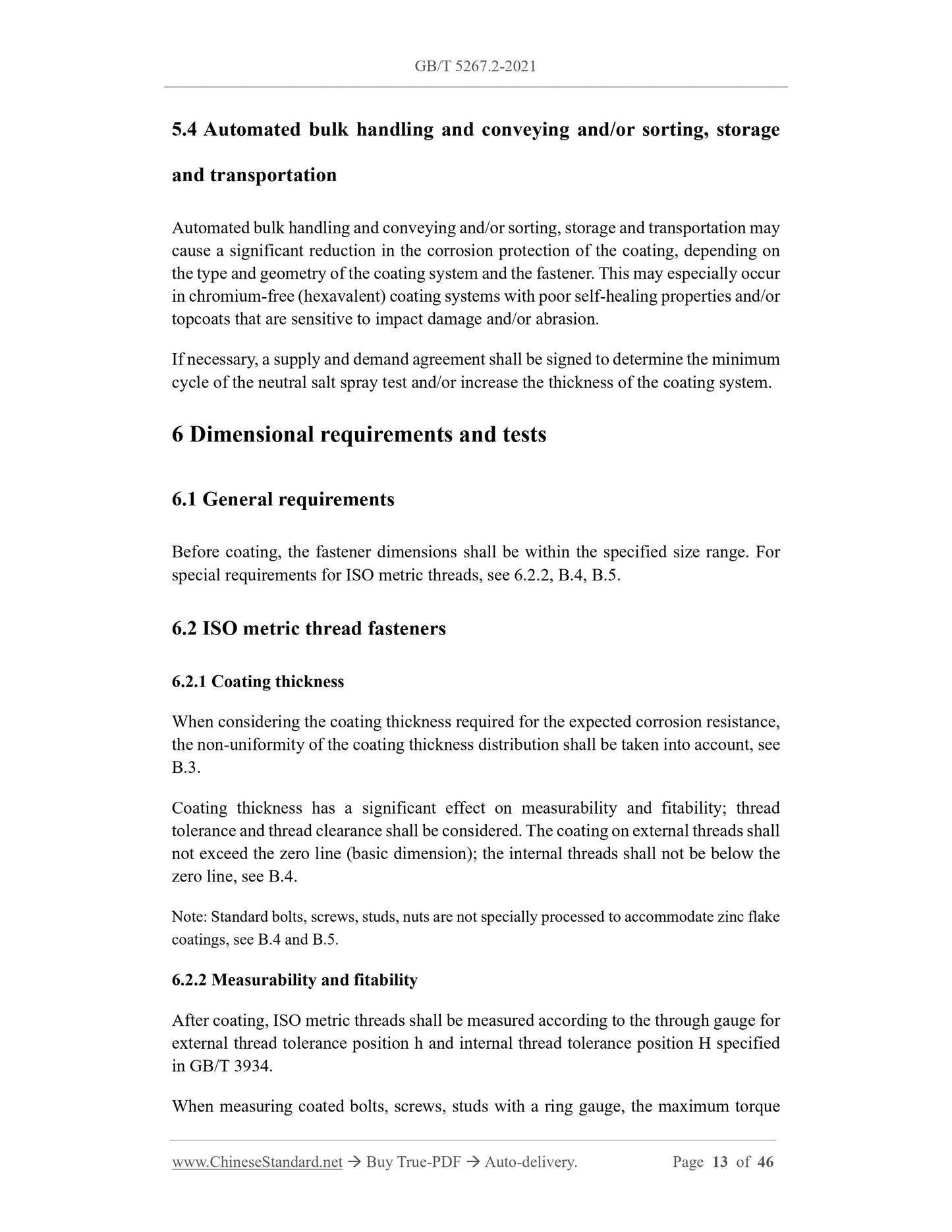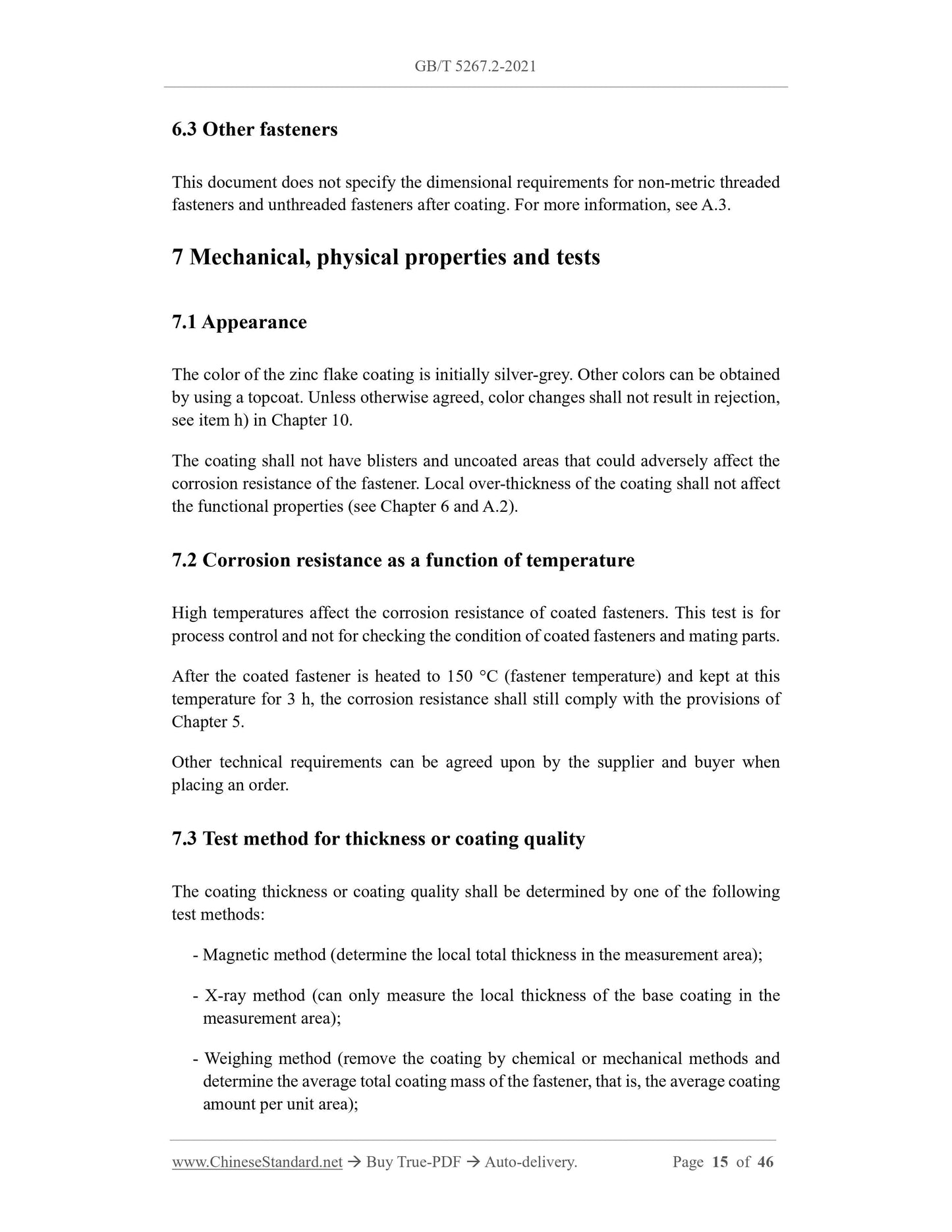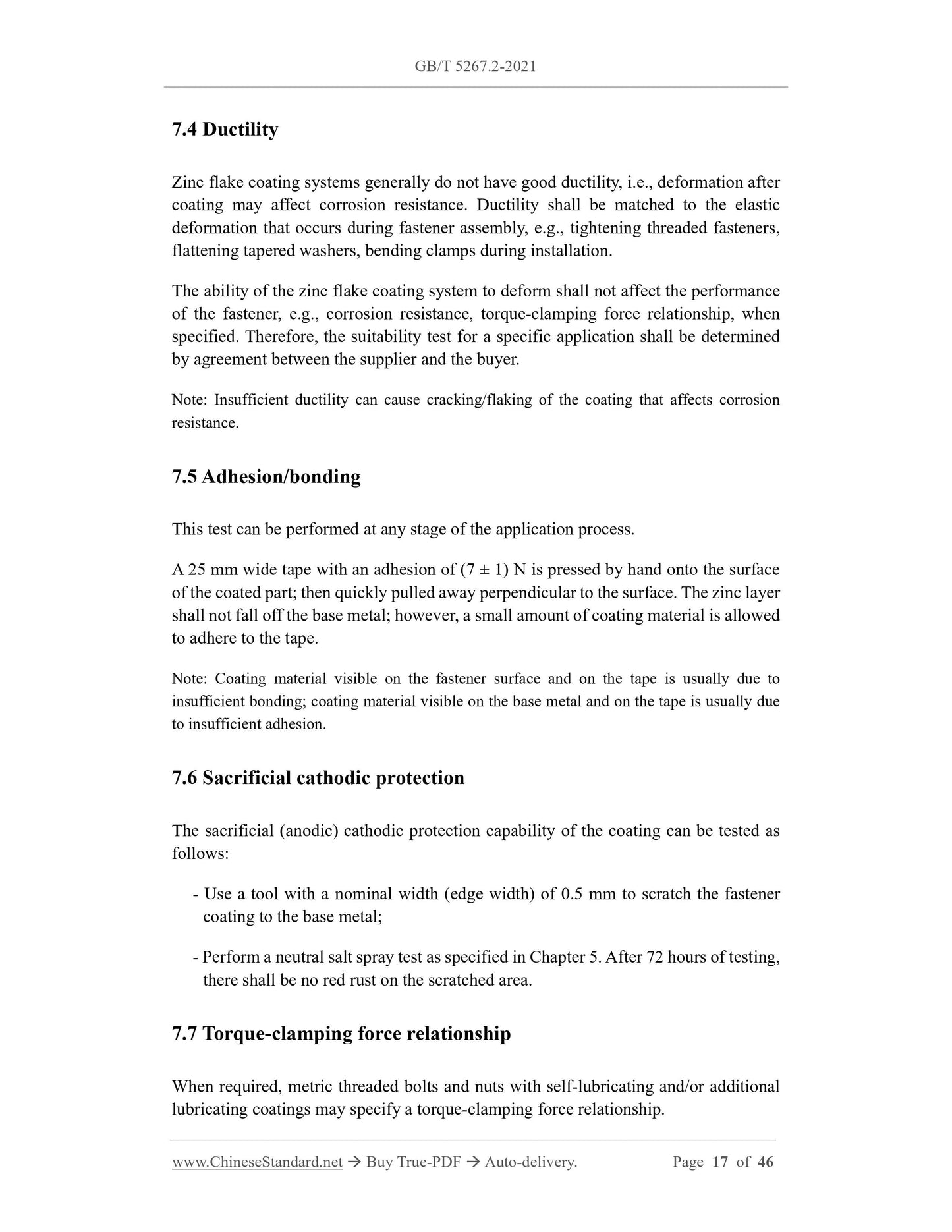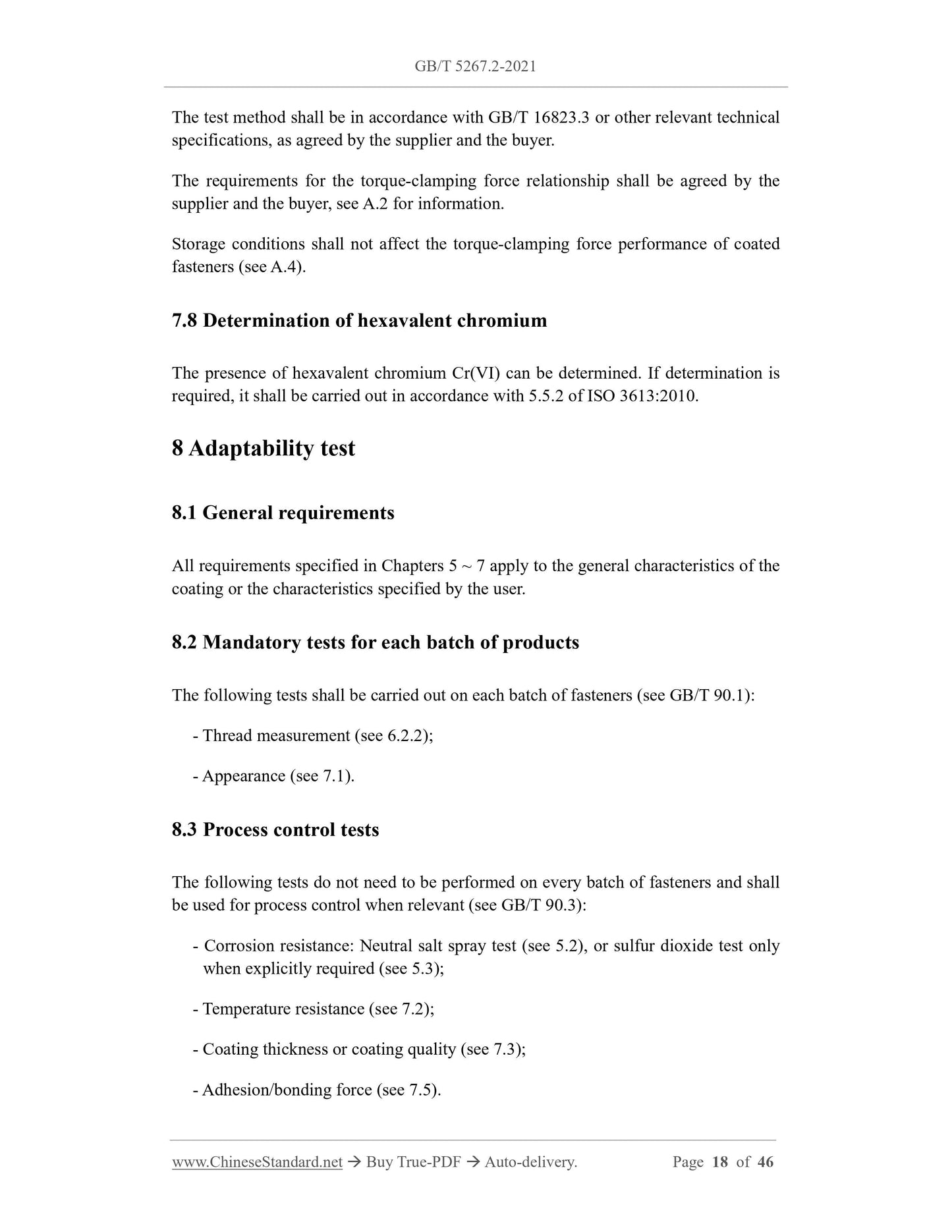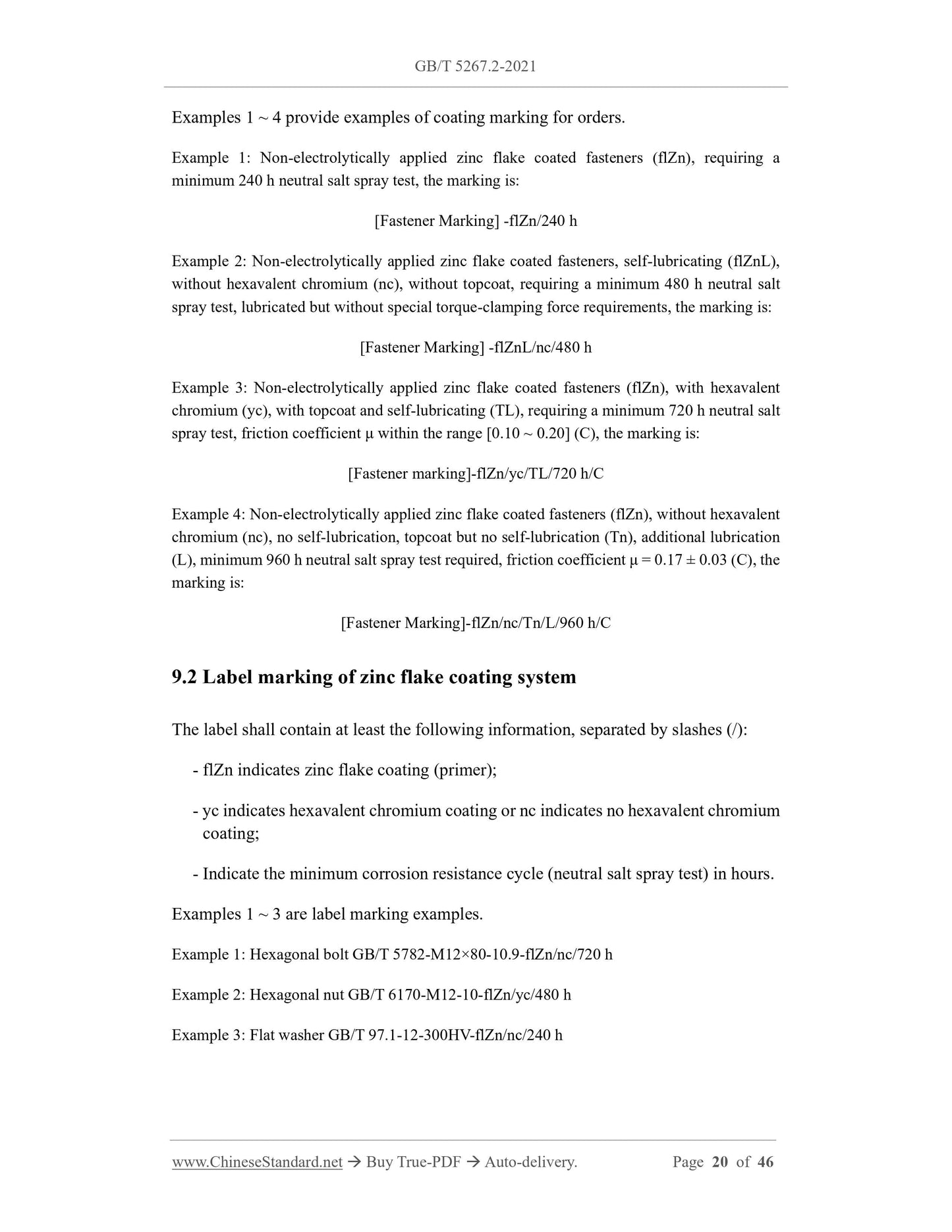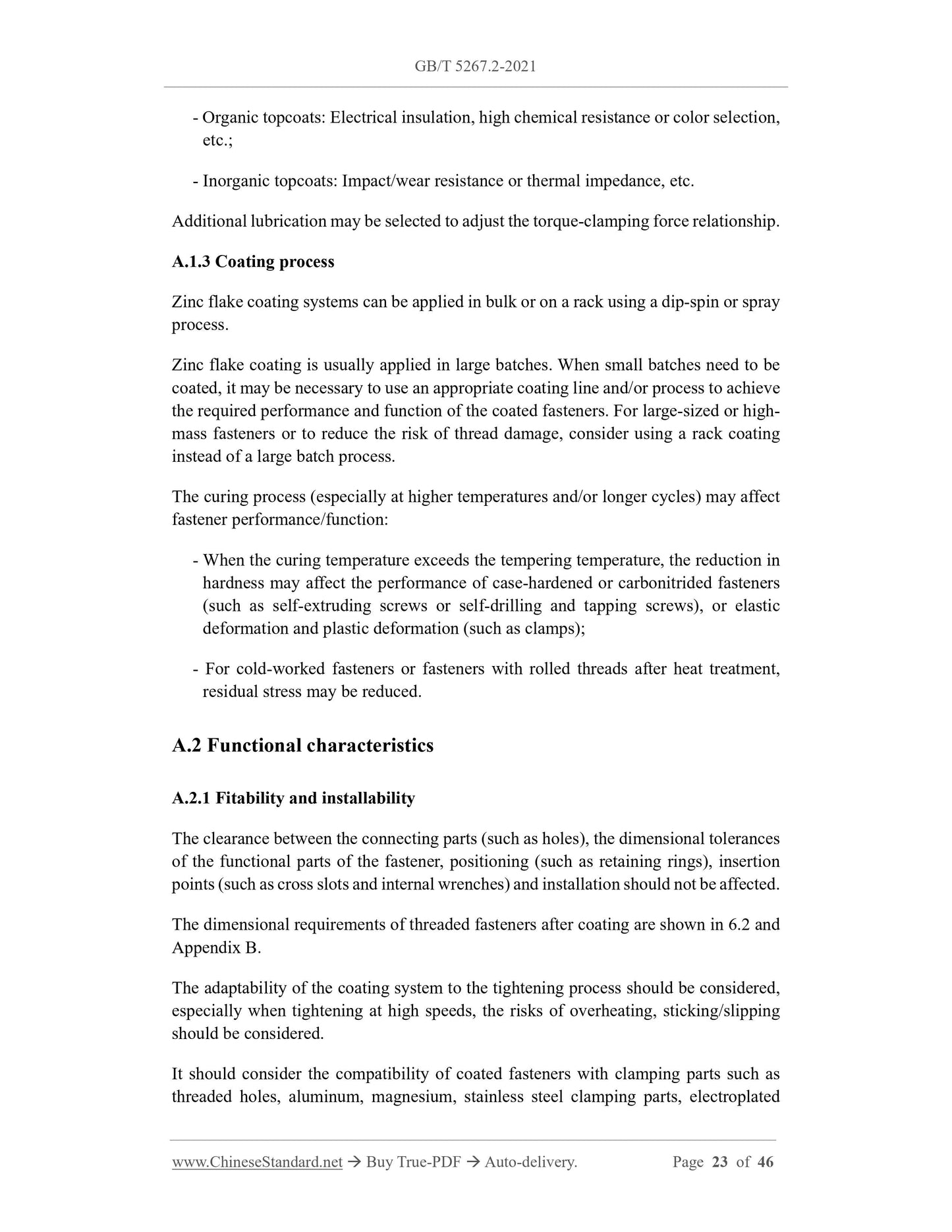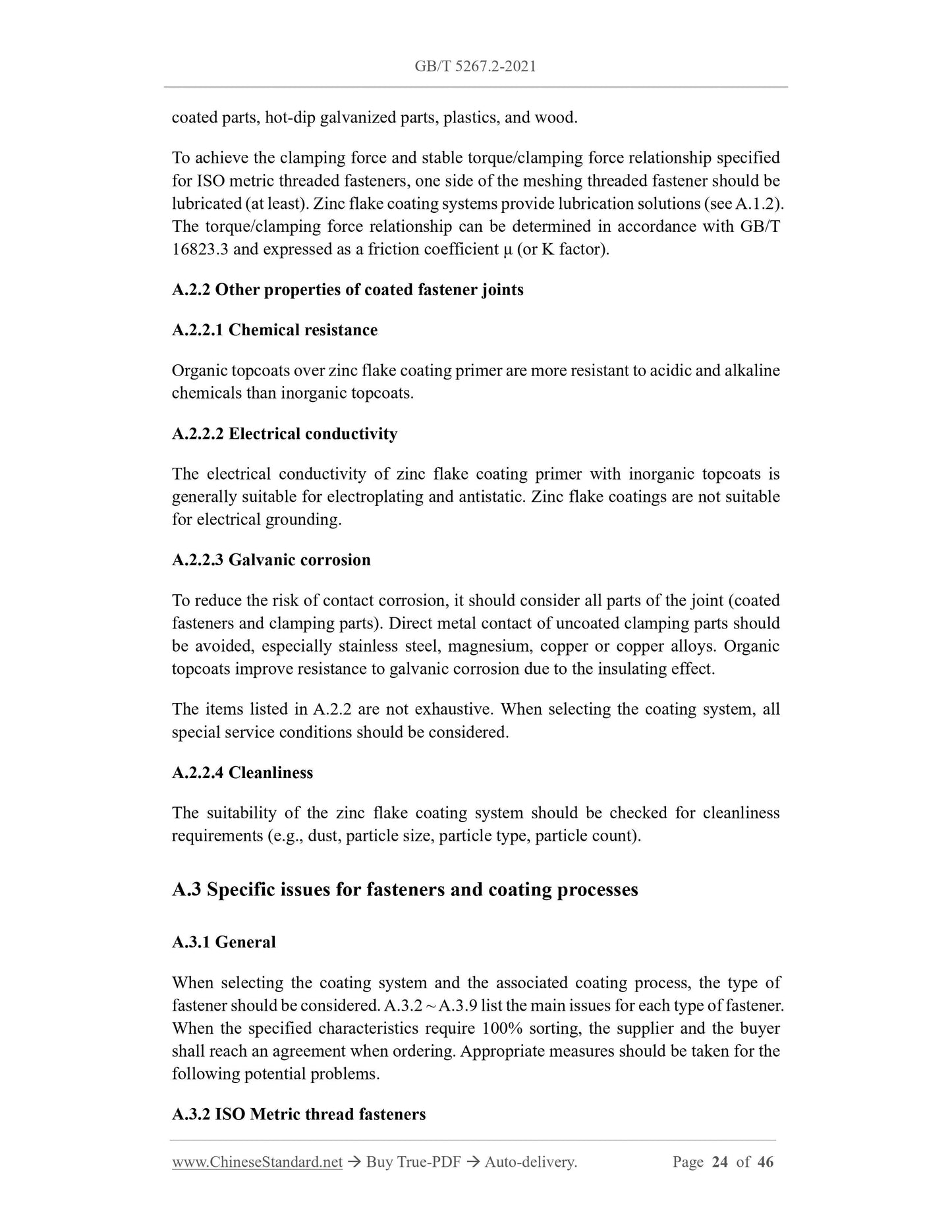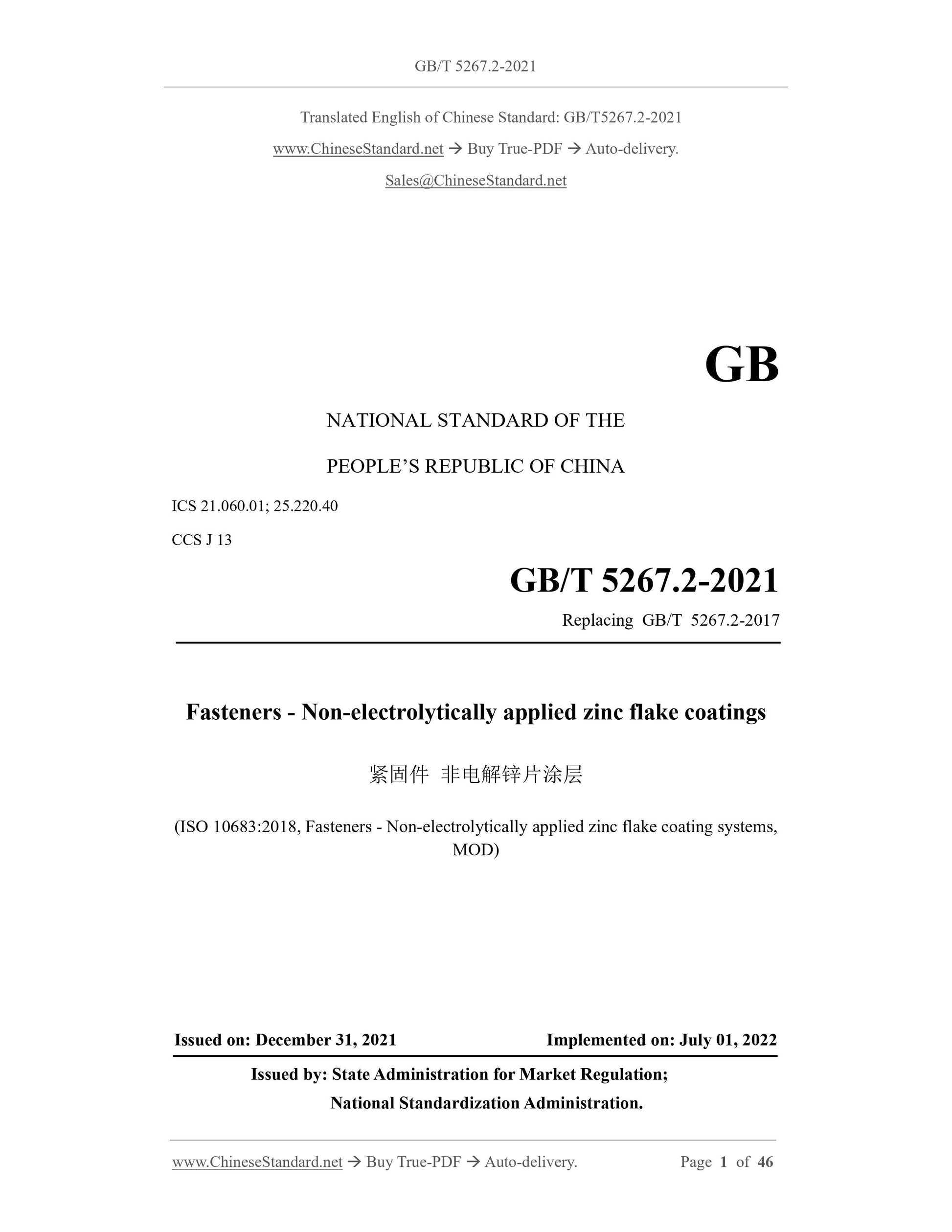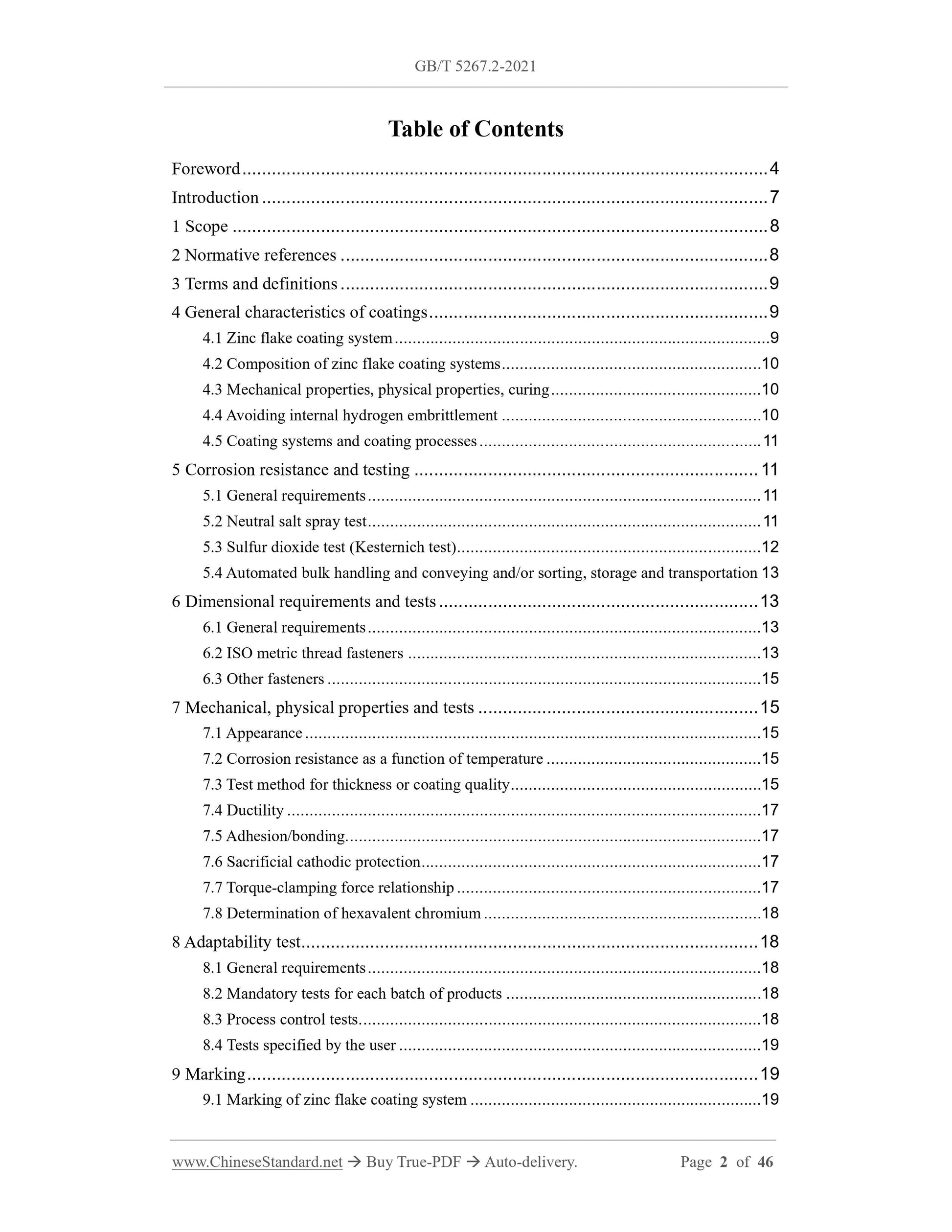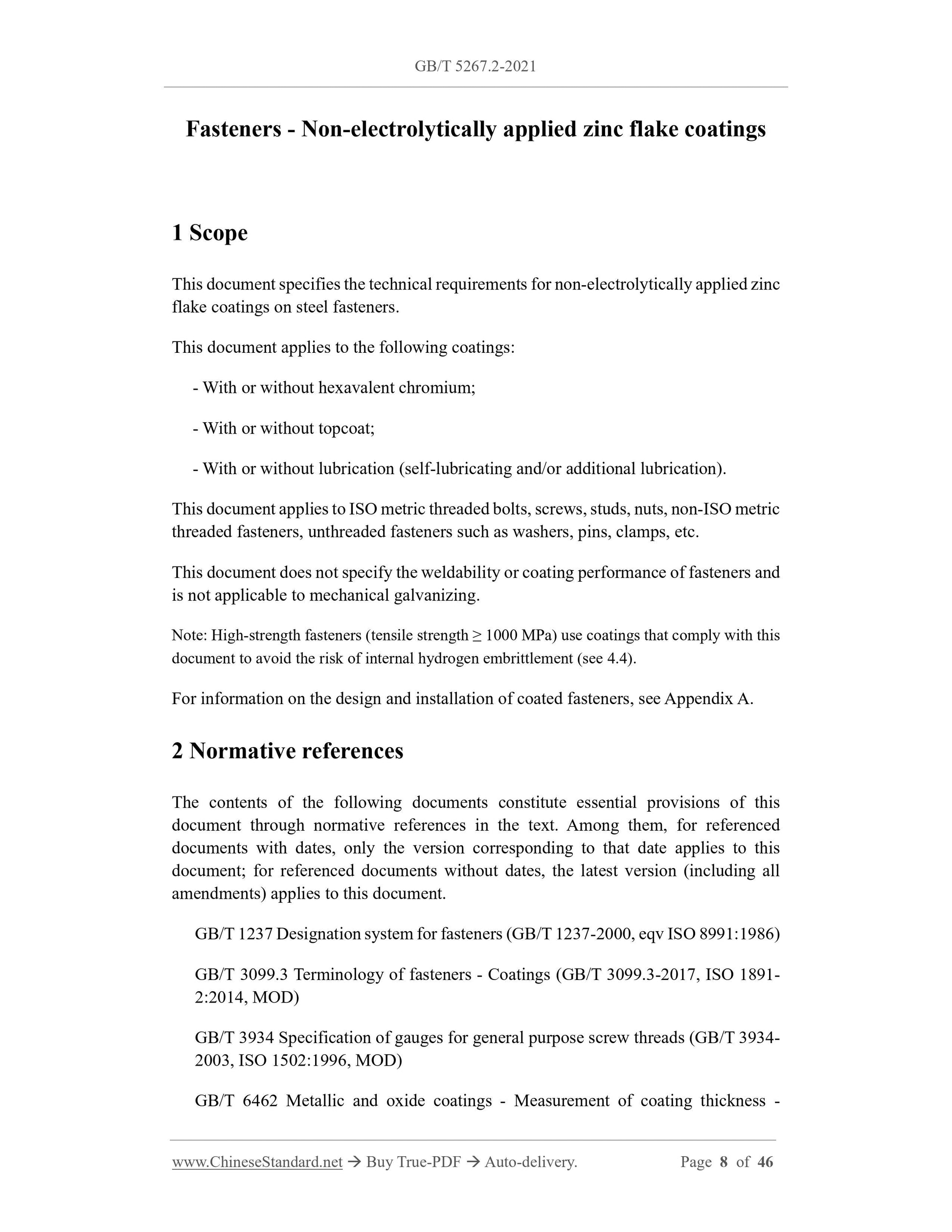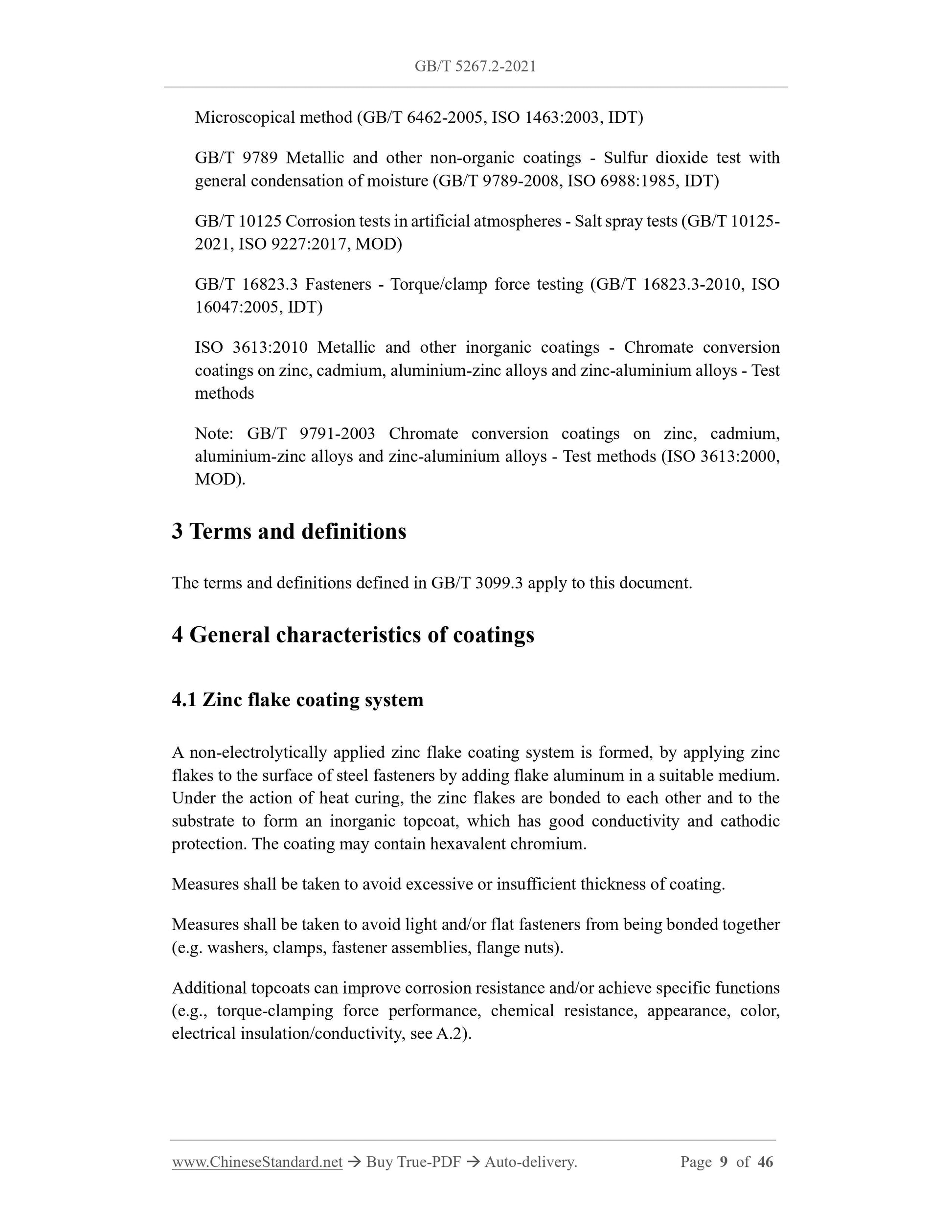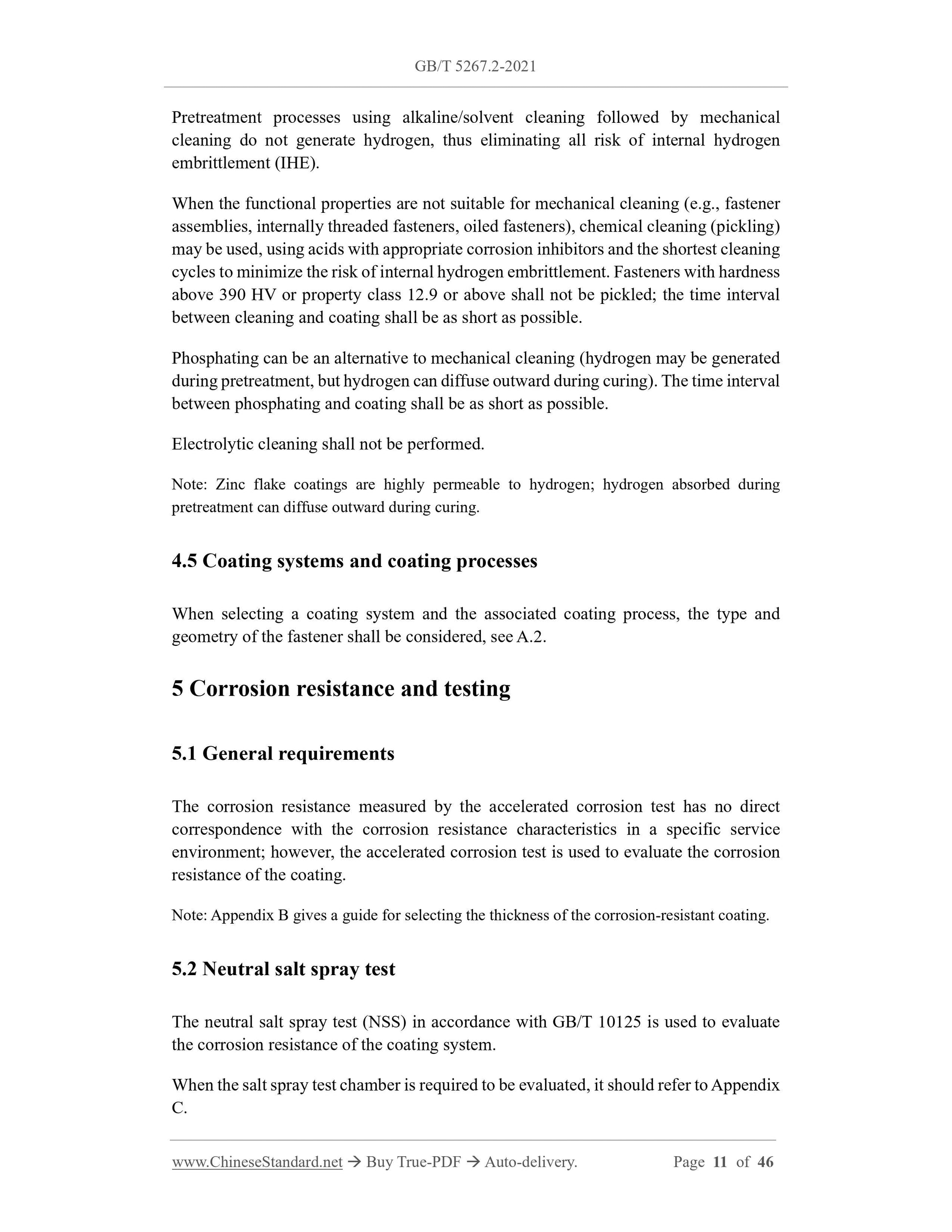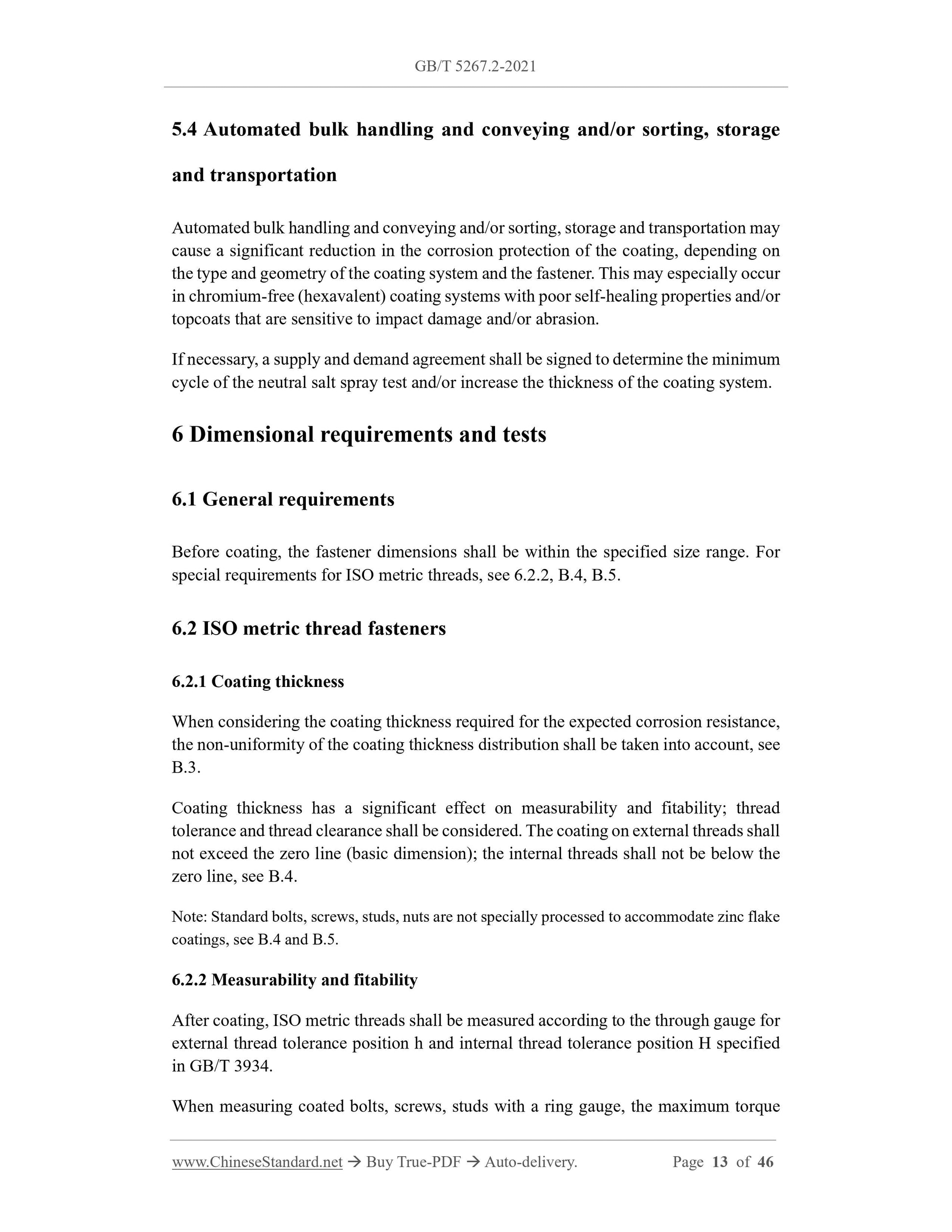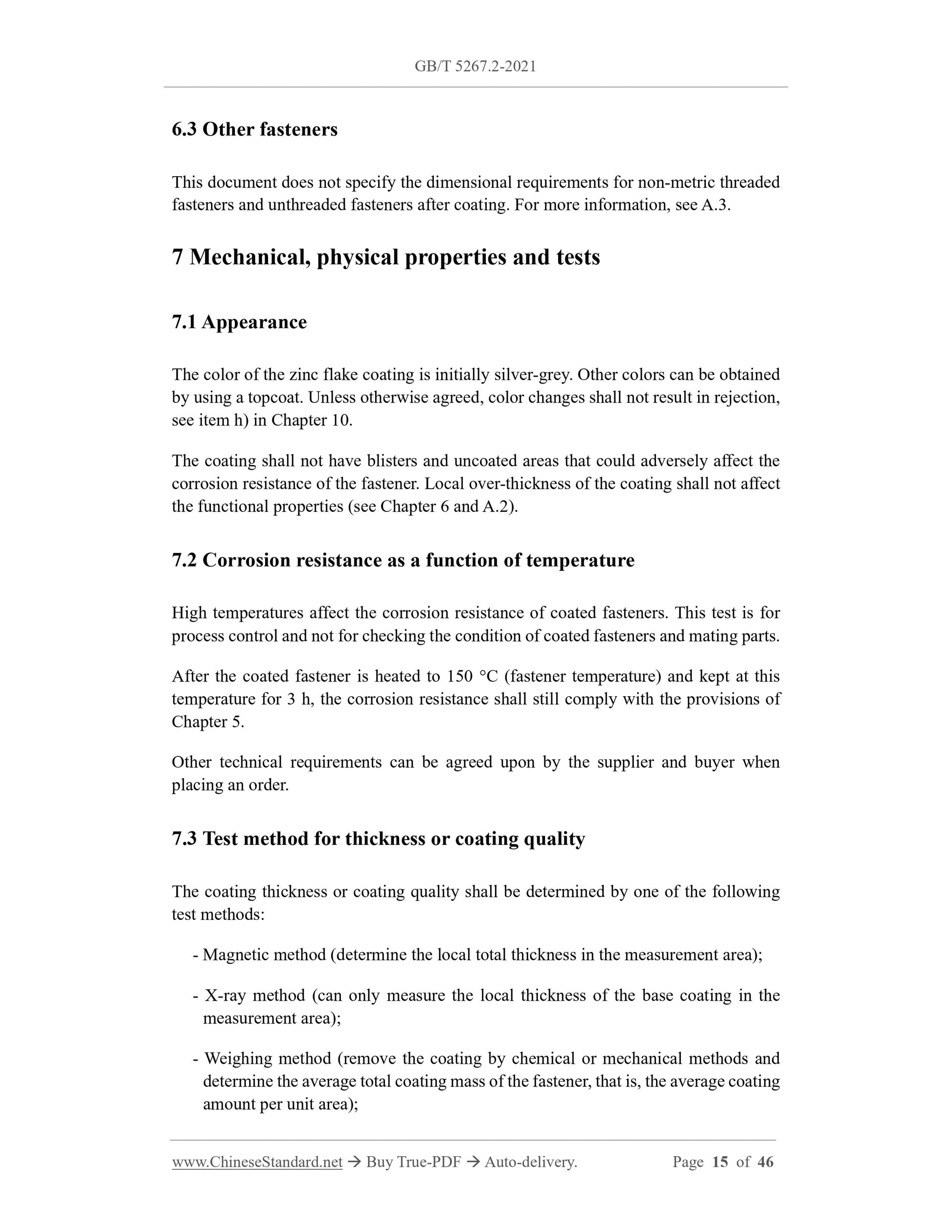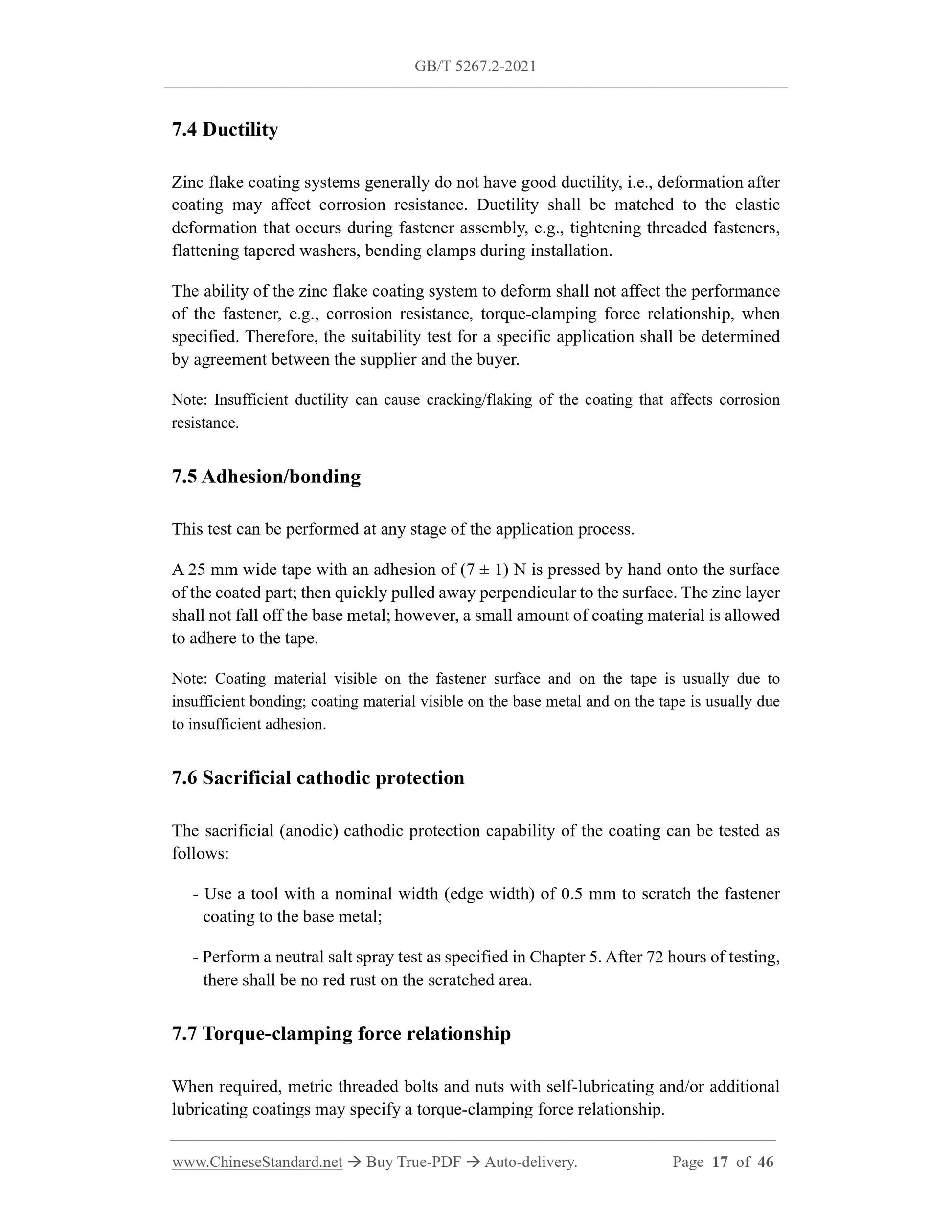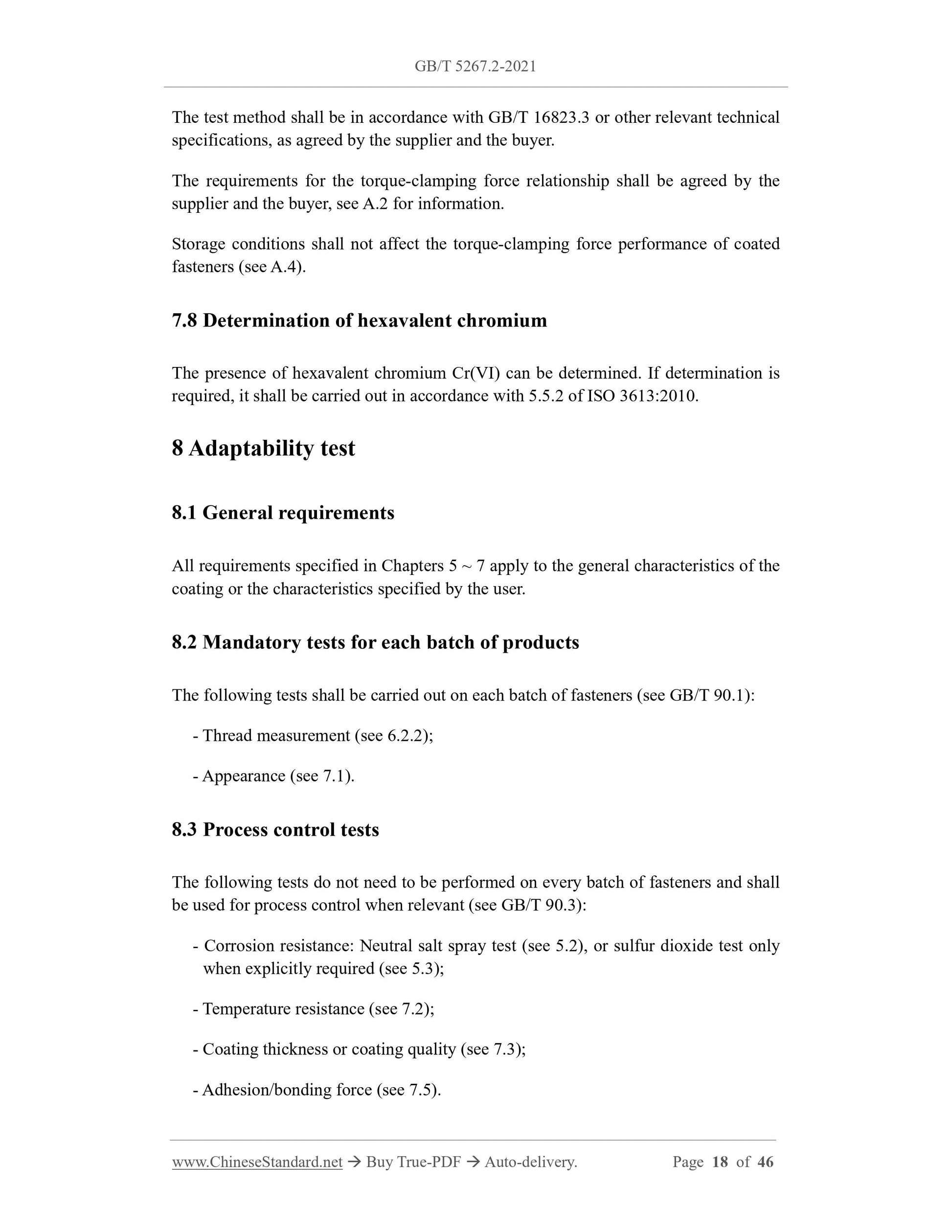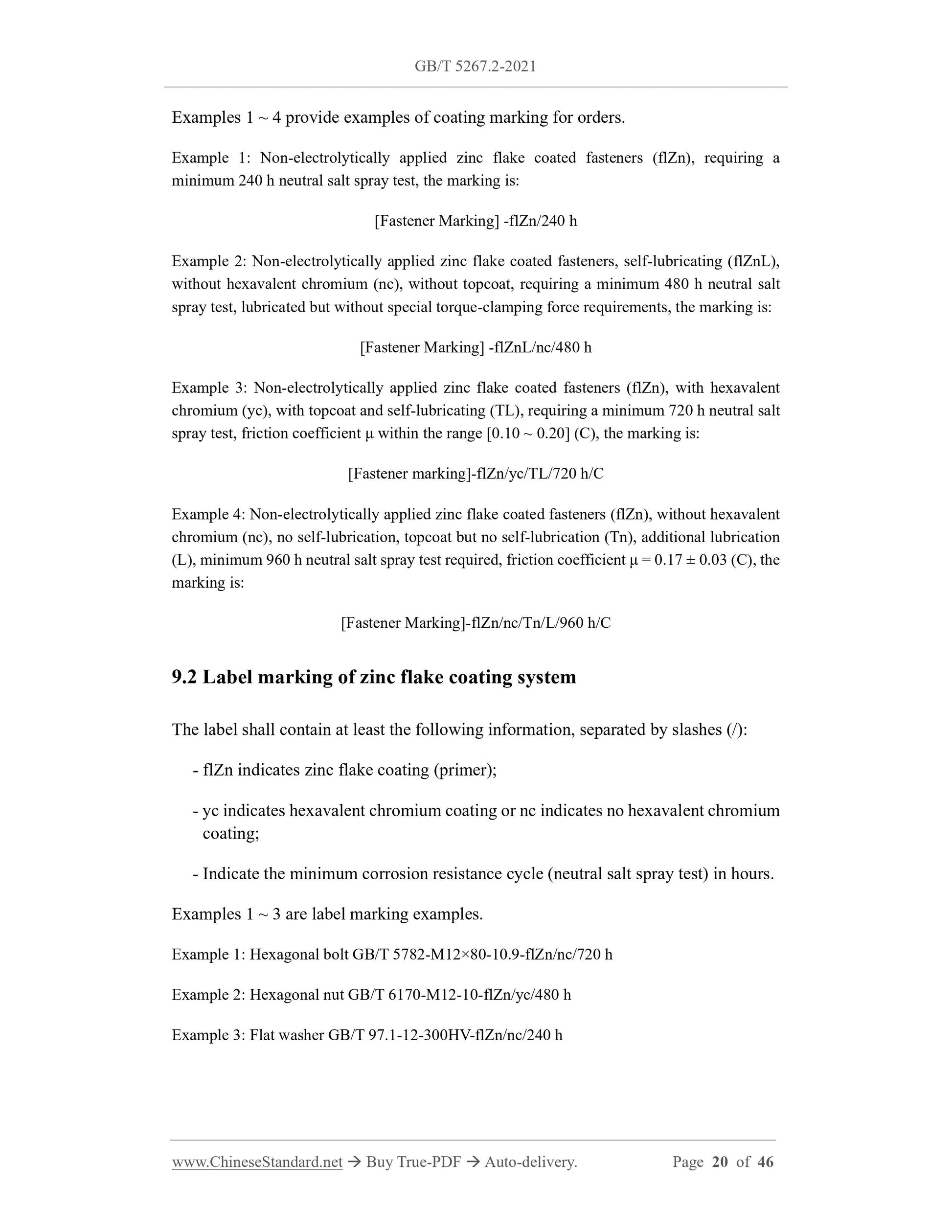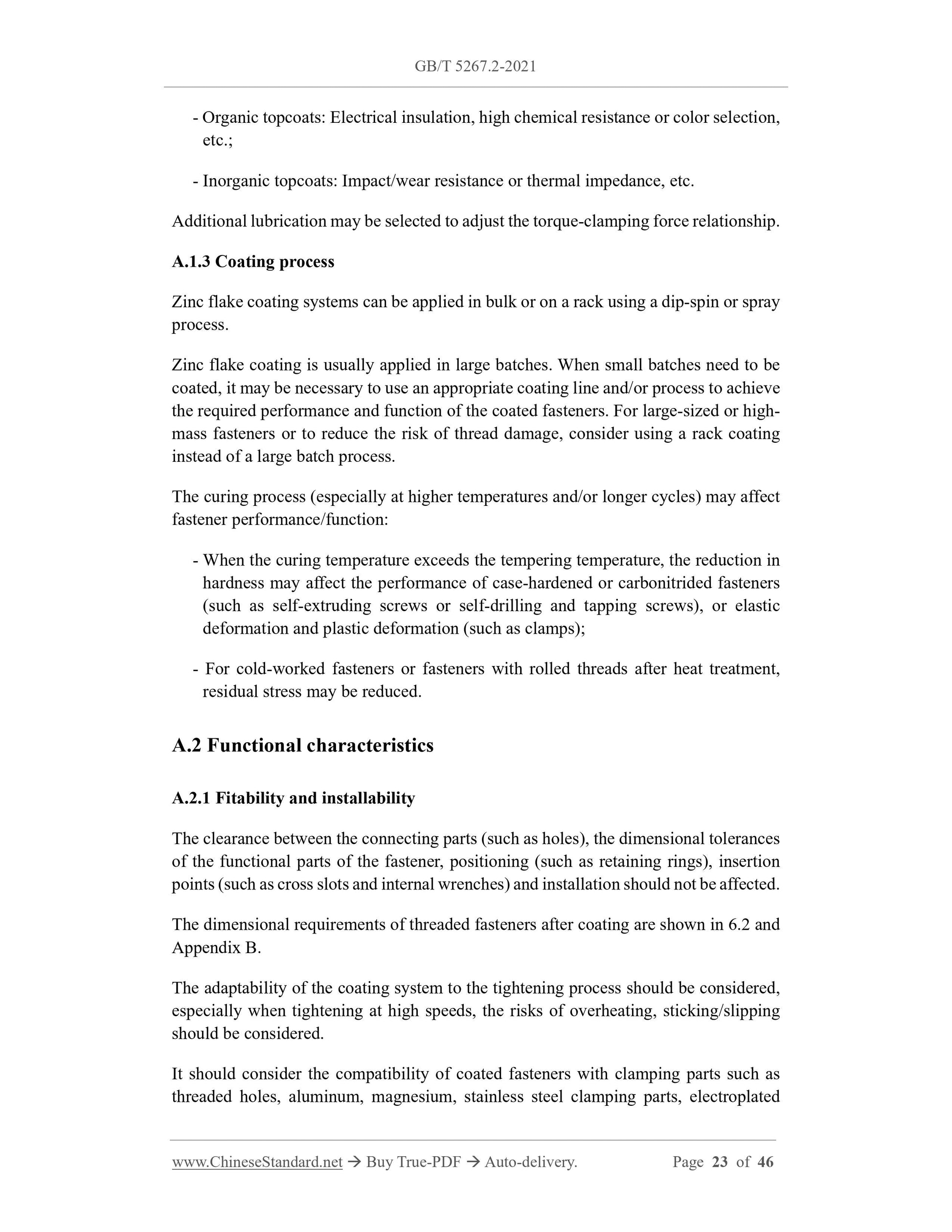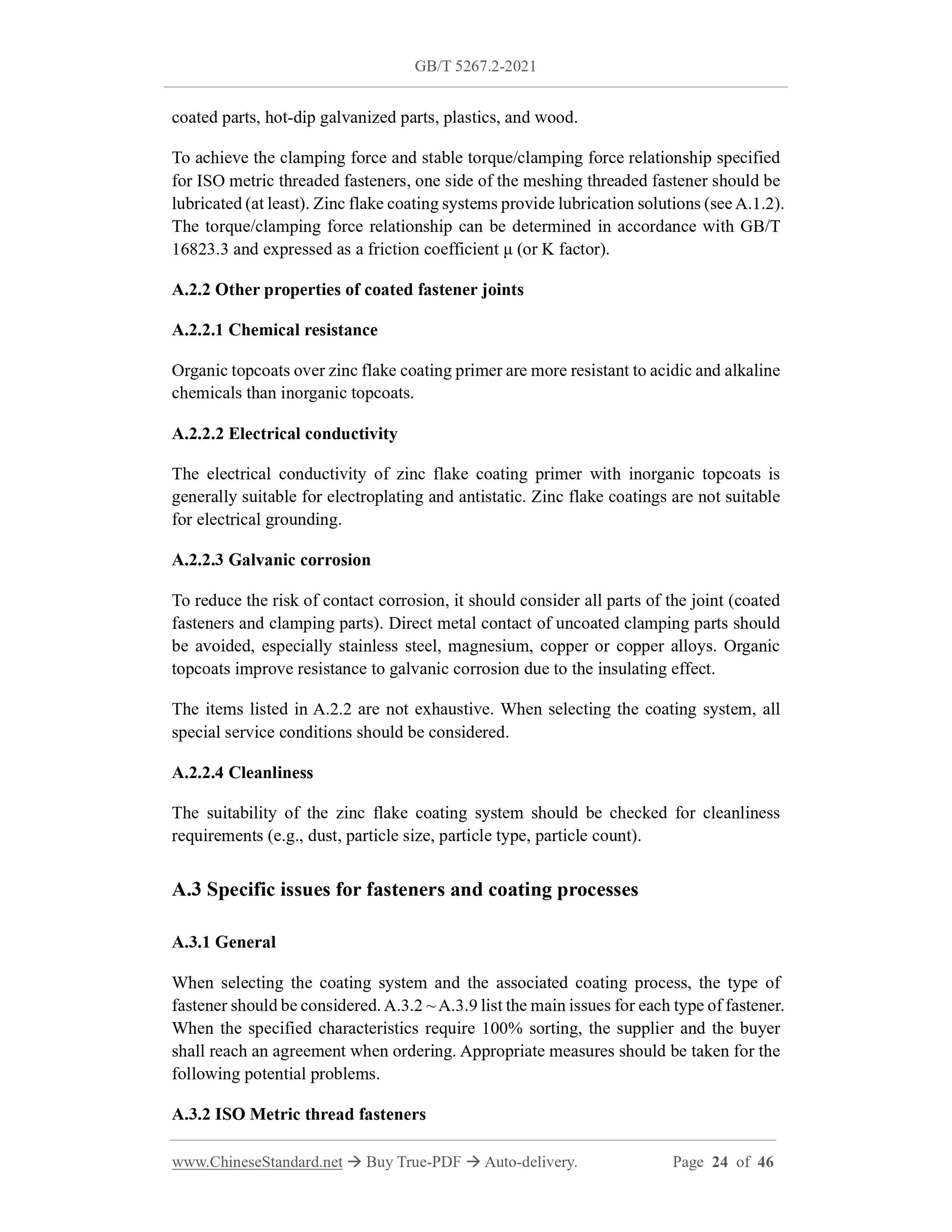1
/
of
12
www.ChineseStandard.us -- Field Test Asia Pte. Ltd.
GB/T 5267.2-2021 English PDF (GB/T5267.2-2021)
GB/T 5267.2-2021 English PDF (GB/T5267.2-2021)
Regular price
$530.00
Regular price
Sale price
$530.00
Unit price
/
per
Shipping calculated at checkout.
Couldn't load pickup availability
GB/T 5267.2-2021: Fasteners - Non-electrolytically applied zinc flake coatings
Delivery: 9 seconds. Download (and Email) true-PDF + Invoice.Get Quotation: Click GB/T 5267.2-2021 (Self-service in 1-minute)
Newer / historical versions: GB/T 5267.2-2021
Preview True-PDF
Scope
This document specifies the technical requirements for non-electrolytically applied zincflake coatings on steel fasteners.
This document applies to the following coatings:
- With or without hexavalent chromium;
- With or without topcoat;
- With or without lubrication (self-lubricating and/or additional lubrication).
This document applies to ISO metric threaded bolts, screws, studs, nuts, non-ISO metric
threaded fasteners, unthreaded fasteners such as washers, pins, clamps, etc.
This document does not specify the weldability or coating performance of fasteners and
is not applicable to mechanical galvanizing.
Note: High-strength fasteners (tensile strength ≥ 1000 MPa) use coatings that comply with this
document to avoid the risk of internal hydrogen embrittlement (see 4.4).
For information on the design and installation of coated fasteners, see Appendix A.
Basic Data
| Standard ID | GB/T 5267.2-2021 (GB/T5267.2-2021) |
| Description (Translated English) | Fasteners - Non-electrolytically applied zinc flake coatings |
| Sector / Industry | National Standard (Recommended) |
| Classification of Chinese Standard | J13 |
| Word Count Estimation | 34,350 |
| Issuing agency(ies) | State Administration for Market Regulation, China National Standardization Administration |
Share
